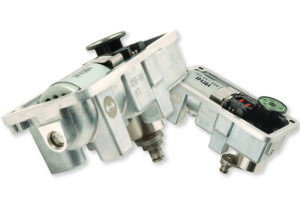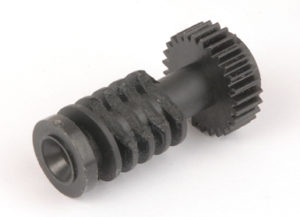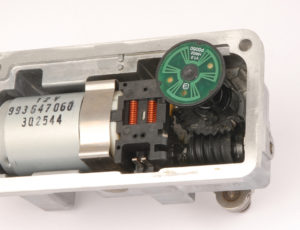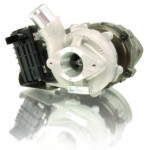Melett take us through some common problems that can cause a turbo to fail
Common turbo failure modes create much discussion between our customers and technical department. To help identify common failures in warranty situations and to provide advice on how to prevent future
failures occurring, we’ve created a series of help guides, the first of which covers Rotary Electronic Actuators.
REA (Rotary Electronic Actuators) or SREA (Simple Rotary Electronic Actuators) are fitted to many variable geometry turbos and control the variable vane movement.
What is variable geometry and why are these systems used?
When a turbocharger is matched to an engine, it is essential to balance the low speed response with high speed efficiency. The nozzle ring assembly is designed to change the exhaust gas inlet ar ea with the engine speed to closely match the desired boost requirements of the engine. As the engine speed increases, the electronic actuator moves the nozzle ring assembly vanes to the fully open position to
ea with the engine speed to closely match the desired boost requirements of the engine. As the engine speed increases, the electronic actuator moves the nozzle ring assembly vanes to the fully open position to
maximize the exhaust gas flow.
REA/SREA electronic actuators are highly complex and intricate. They’re not interchangeable with different gearboxes or black caps. The calibration settings are programmed in the software within the black cap and are unique to each turbocharger.
Benefits of Electronic Actuators include:
■ Rapid response to changes in speed;
■ Accuracy of minimum and maximum air flow;
■ Feedback loop to the vehicle’s ECU – indicates where the actuator position is and learns what boost is required.
Faulty Electronic Actuator symptoms:
■ Complete loss of power, causing the vehicle to go into ‘limp home’ mode;
■ Flashing engine management light;
■ Intermittent low pressure, or over boost.
Common failure modes Gearbox failure

REA and SREA will fail as a result of the variable geometry mechanism sticking due to ‘sludging’ or carbon build-up. When the variable geometry mechanism sticks, it pulls a higher current through the motor than it is designed to take, which causes the motor to burn out or the plastic worm gears to fail.
This restriction can reduce boost pressure and can result in the vehicle being put into limp home mode. In most failures, the black cap and electronics are unaffected by the gearbox failure and can be re-used.
Board connectors
The wire connectors can expand and contract, eventually breaking and causing failure of the electronic actuator. This fault can often go undetected during repair and workshop testing, as the fault can only be detected once the actuator heats up.
Mishandling of the turbo
If the turbo connector is knocked or banged, it will break and the whole unit will need replacing.
Water ingress
The location of a turbo in the engine compartment can mean the electronic actuator is more susceptible to water ingress. The actuator can become rusty and contaminated, giving the wrong signals and
ultimately breaking.
Engine vibration
Constant vibration from the vehicle can wear the electronic actuator out, causing it to fail over a period of time.
Loss of power

If the electronic actuator has failed to open the nozzle ring assembly vanes under acceleration, the turbo will fail to operate efficiently. If the vanes are set to a closed position, it can cause choking of the engine
or overspeeding of the turbine. Alternatively, if the vanes are open more than is required, the turbo will have too much ‘lag’ and be slow to respond. If this occurs, it is essential to check if the electronic actuator has failed as a consequence of other failure modes.
Repair tips
1. When repairing the electronic actuator the worm gear and motor must be the correct ratio to avoid immediate failure.
2. REA actuators must be calibrated to the turbo after repair. Incorrect calibration of the electronic actuator when assembled on the turbocharger can result in poor performance.
3. Soldering to repair broken connections in the gearbox and black cap is not advised. Solder is susceptible to cracking in environments with temperature variance and vibration. For this reason, the motor and motor choke assembly connector must be spot-welded.










